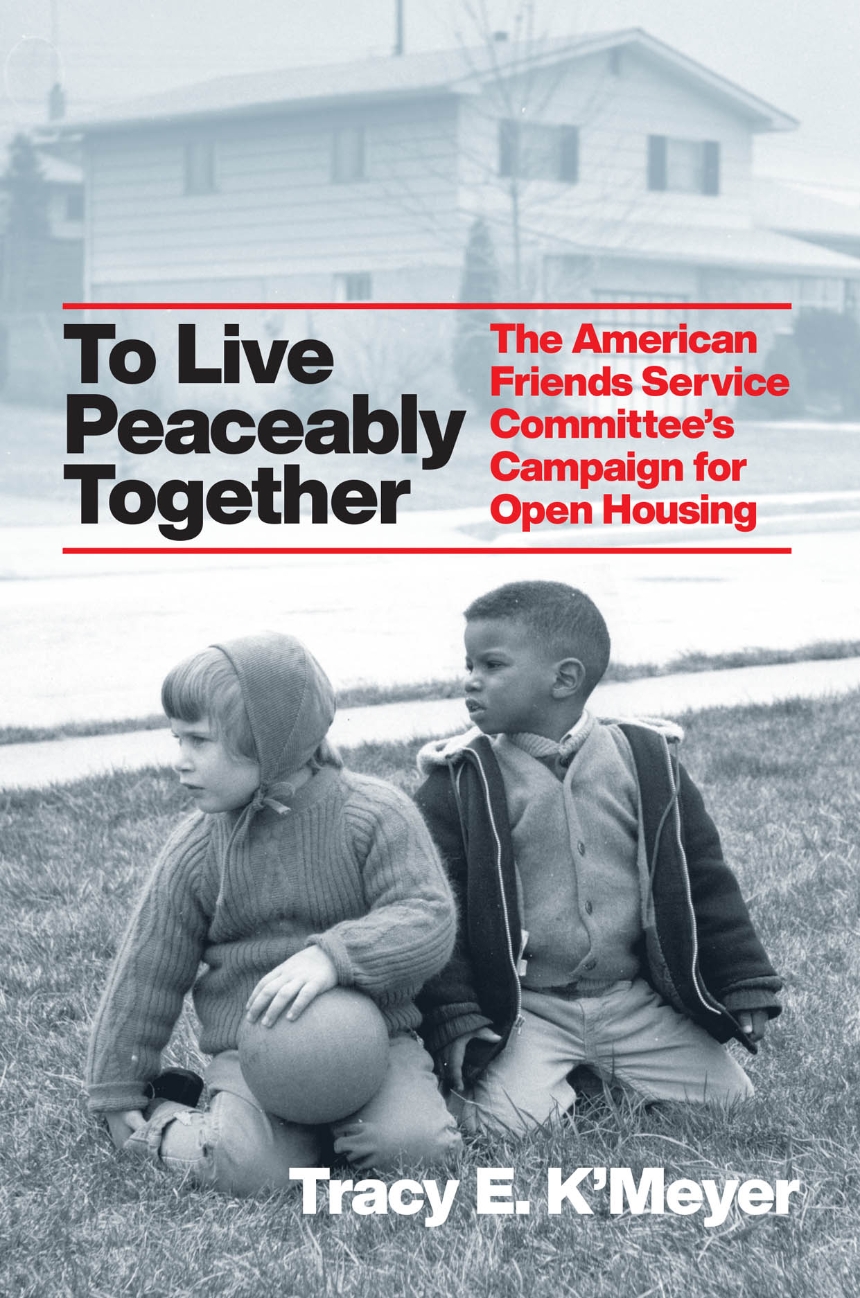To Live Peaceably Together
The American Friends Service Committee’s Campaign for Open Housing
9780226817811
9780226817828
9780226832289
To Live Peaceably Together
The American Friends Service Committee’s Campaign for Open Housing
A groundbreaking look at how a predominantly white faith-based group reset the terms of the fight to integrate US cities.
The bitterly tangled webs of race and housing in the postwar United States hardly suffer from a lack of scholarly attention. But Tracy K’Meyer’s To Live Peaceably Together delivers something truly new to the field: a lively examination of a predominantly white faith-based group—the Quaker-aligned American Friends Service Committee (AFSC)—that took a unique and ultimately influential approach to cultivating wider acceptance of residential integration. Built upon detailed stories of AFSC activists and the obstacles they encountered in their work in Chicago, Philadelphia, and Richmond, California, To Live Peaceably Together is an engaging and timely account of how the organization allied itself to a cause that demanded constant learning, reassessment, and self-critique. K’Meyer details the spiritual and humanist motivations behind the AFSC, its members’ shifting strategies as they came to better understand structural inequality, and how those strategies were eventually adopted by a variety of other groups. Her fine-grained investigation of the cultural ramifications of housing struggles provides a fresh look at the last seventy years of racial activism.
The bitterly tangled webs of race and housing in the postwar United States hardly suffer from a lack of scholarly attention. But Tracy K’Meyer’s To Live Peaceably Together delivers something truly new to the field: a lively examination of a predominantly white faith-based group—the Quaker-aligned American Friends Service Committee (AFSC)—that took a unique and ultimately influential approach to cultivating wider acceptance of residential integration. Built upon detailed stories of AFSC activists and the obstacles they encountered in their work in Chicago, Philadelphia, and Richmond, California, To Live Peaceably Together is an engaging and timely account of how the organization allied itself to a cause that demanded constant learning, reassessment, and self-critique. K’Meyer details the spiritual and humanist motivations behind the AFSC, its members’ shifting strategies as they came to better understand structural inequality, and how those strategies were eventually adopted by a variety of other groups. Her fine-grained investigation of the cultural ramifications of housing struggles provides a fresh look at the last seventy years of racial activism.
240 pages | 12 halftones | 6 x 9 | © 2022
Historical Studies of Urban America
History: American History, Urban History
Religion: Religion and Society
Reviews
Table of Contents
Introduction
Chapter 1 Getting Started: Launching the Housing Opportunities Programs
Chapter 2 Organizing the Suburbs: White Fair Housers and Black Pioneers
Chapter 3 Direct Action: Battering the Gates, Nonviolently
Chapter 4 Speaking Truth to Power: Using the Power of Government to Integrate Housing
Chapter 5 Community Organizing: “A People Program in a Housing Context”
Conclusion
Acknowledgments
Archive Collection Abbreviations
Notes
Index
Chapter 1 Getting Started: Launching the Housing Opportunities Programs
Chapter 2 Organizing the Suburbs: White Fair Housers and Black Pioneers
Chapter 3 Direct Action: Battering the Gates, Nonviolently
Chapter 4 Speaking Truth to Power: Using the Power of Government to Integrate Housing
Chapter 5 Community Organizing: “A People Program in a Housing Context”
Conclusion
Acknowledgments
Archive Collection Abbreviations
Notes
Index
